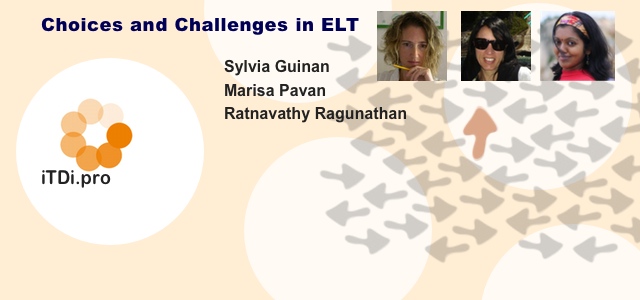The post-CELTA Days
Ratnavathy Ragunathan

This might not necessarily be your cup of tea. In fact, it might even cause a slight squeamishness in the tummy and tightness in your chest. These are purely not my intentions. I do, however, genuinely mean to take a reality check, laying out the bare, grim facts of the ELT industry for post CELTA trainees, most importantly, how these dark hues can veritably be transformed into splashes of radiant colours on the canvas of our teaching journeys.
A couple of months ago I got my CELTA done. It was such a momentous experience. I became more aware of my teaching but most of all, crossed paths with people from different walks of life; experienced teachers meaning to become better teachers, serious individuals deeply thinking of switching careers, fresh graduates planning on a bit of backpacking. And then, there was this other group – a group who had not the slightest inclination as to why they’re getting the CELTA done – “yea, probably yea, it’s gonna…you know…help me get some part-time teaching thing going”. The CELTA group support, though, was tremendous. In between back-to-back endless lesson planning, sleepless nights and assignments, we somehow managed to laugh and hold on together during the intense CELTA month. In a swoop it was all done.
Speaking of the CELTA, it’s interesting how this certification is advertised on the Internet. Recognized as the most highly respected and widely known teacher training programme, these advertisements for the CELTA promise you a teaching job “in almost any location worldwide”, with such strong conviction at that. What most training schools fail to mention is “in almost any location worldwide with the right passport”.
Seriously, the “native non-native teacher tug of war” is, I believe, nothing but a façade. The reality is you just need to have the right passport from the right country. At the very core, this educational industry has regrettably, turned out to be a revenue-churning megacorp, hasn’t it?
Sadly, this truth only set in when some of my CELTA mates started looking for teaching jobs. You see, some of the most passionate CELTAites in my group were NNESTS. They grew so much as teachers during the 4-week course that I was utterly impressed as I sat through their classes day after day. These new teachers connected so well with their learners that it always felt like being in a magical bubble of a classroom. And yet, after the CELTA, they had the toughest time looking for a teaching job (with the “other group” mentioned above, being qualified passport holders, almost immediately receiving offers). It was so painful watching them struggle that it gave me sleepless nights. I could feel the frustration in their messages to me as reality dawned on them.
All I could do was listen, offer suggestions and supportive words.
To these friends so close to my heart, I’d like to say something – “Challenges in life can either enrich you or poison you. You’re the one who decides”. Please remember that …
1) The CELTA is only a certification. Don’t let it define you. Don’t let it break you. Leave it where it belongs – in the file, among the other certificates. Great you’ve got it. Now, move on.
2) Rethink your expectations when looking for a teaching job. Be practical. You’re still fresh in the industry after all. Rather than competing with the “appropriate passport holders” and seeking for the “perfect-CELTA-like-Pre-Intermediate-highly motivated- 16-to-a-class-language school” job, accept the real deal whole heartedly, be it a public school with 30 plus rebellious teenagers or a group of hyperactive young learners who drive you up the wall. Let the experience of working and connecting with them build you up. Reflect. Blog or keep a journal. Think of how you can do it better again. One step at a time.
3) For a start, re-read all the methodology books suggested in the CELTA course. Not for the purpose of completing CELTA assignments, but for expanding your consciousness as a teacher.
4) Get connected with teachers around the world, and don’t give reasons not to. All you need to do is to google ELT webinars, iTDi,pro, ELTChat or KELTChat (just to name a few) and the teaching world will open up to you.
e) Nothing comes easy in life! If it’s easy, it’s not life is it? Work harder if you have to. Go ahead, complain and vent your frustrations, but keep working harder and growing as a teacher.
Oh, and in case you’re wondering as to whether I’ve put this into practice? Yes. I have. And yes, it has helped me get to where I am right now. And for the record, I do think I need to work on my YL classroom management skills, and am in the midst of reading up a brilliant book titled Getting The Buggars To Behave J
PS: My most personal and heartfelt gratitude to all teachers who have been strongly standing for equal opportunities in the ELT world. If you drop by Malaysia, I’d like to invite you for a warm meal at our home.












 The last challenge I want to share with you is one we all come across, which is how to spend the summer holiday, without feeling bored and if we can get some professional development to refresh our experience without spending too much and at our own pace … whenever and however we can and want.
The last challenge I want to share with you is one we all come across, which is how to spend the summer holiday, without feeling bored and if we can get some professional development to refresh our experience without spending too much and at our own pace … whenever and however we can and want.